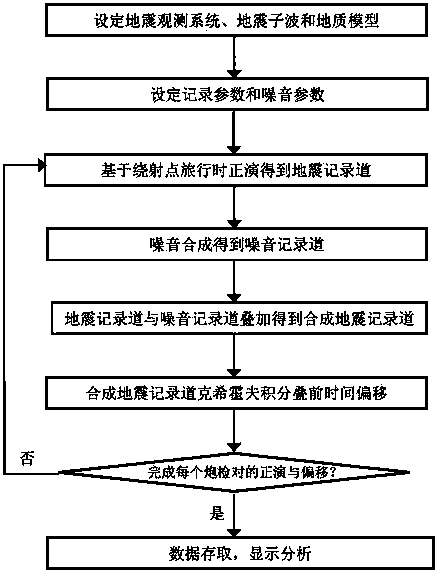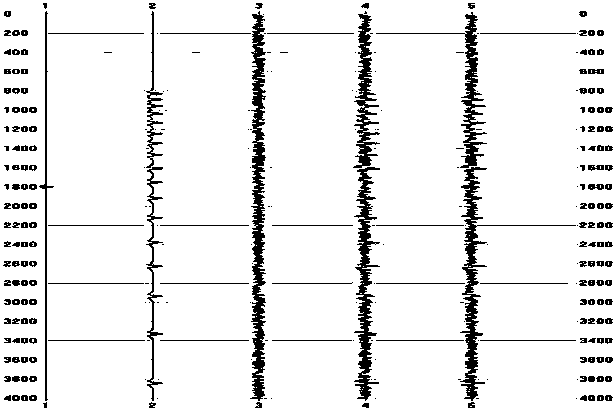Method for analyzing pre-stack time migration response of seismological observation system
A seismic observation system, pre-stack time migration technology, applied in the direction of seismic signal processing, etc., can solve the problems of not considering the influence of seismic noise, low analysis accuracy, poor three-dimensional analysis ability of imaging quality, etc.
- Summary
- Abstract
- Description
- Claims
- Application Information
AI Technical Summary
Problems solved by technology
Method used
Image
Examples
Embodiment 2
[0066] Example 2: The set parameters of observation system 2 are: 8-line receiving, 100 lines / receiving line, track distance 50 meters, receiving line distance 200 meters, number of shots in the beam 4, shot distance 50 meters, shot line distance 200 meters, the rolling distance between beams is 200 meters. According to the steps described in Example 1, the obtained pre-stack time migration response is as follows Figure 7 and Figure 8 shown, Figure 7 and Figure 5 There is little difference between the two, but Figure 8 and Image 6 By comparison, it can be seen that Figure 8 The middle side lobe noise is obviously smaller, and the range of 8 channels is higher than that of Image 6 The mid-side lobe noise has a small range and a small background noise, indicating that the imaging quality of observation system 1 and observation system 2 in the inline direction is comparable, but observation system 2 is beneficial to obtain better imaging results in the crossline dir...
Embodiment 3
[0067] Example 3: The set parameters of observation system 3 are: 32 lines of receiving, 100 lines / receiving line, track distance of 50 meters, receiving line distance of 100 meters, number of shot points in the beam 10, shot point distance of 80 meters, and shot line distance 80 meters, rolling distance between beams is 800 meters; geological models such as Figure 9 Shown is a complex fault block geological model. According to the steps described in Example 1, the obtained Figure 10 The inline-direction prestack time migration response of observation system 1 is shown and Figure 11 The inline direction prestack time migration response of observation system 3 is shown. Figure 11 and Figure 10 The comparative analysis shows that the observation system 1 can achieve reliable imaging of complex fault blocks, but the noise on the response profile of the pre-stack time migration is relatively strong, which indicates that the observation system 1 still lacks the ability to s...
PUM
 Login to View More
Login to View More Abstract
Description
Claims
Application Information
 Login to View More
Login to View More - Generate Ideas
- Intellectual Property
- Life Sciences
- Materials
- Tech Scout
- Unparalleled Data Quality
- Higher Quality Content
- 60% Fewer Hallucinations
Browse by: Latest US Patents, China's latest patents, Technical Efficacy Thesaurus, Application Domain, Technology Topic, Popular Technical Reports.
© 2025 PatSnap. All rights reserved.Legal|Privacy policy|Modern Slavery Act Transparency Statement|Sitemap|About US| Contact US: help@patsnap.com



